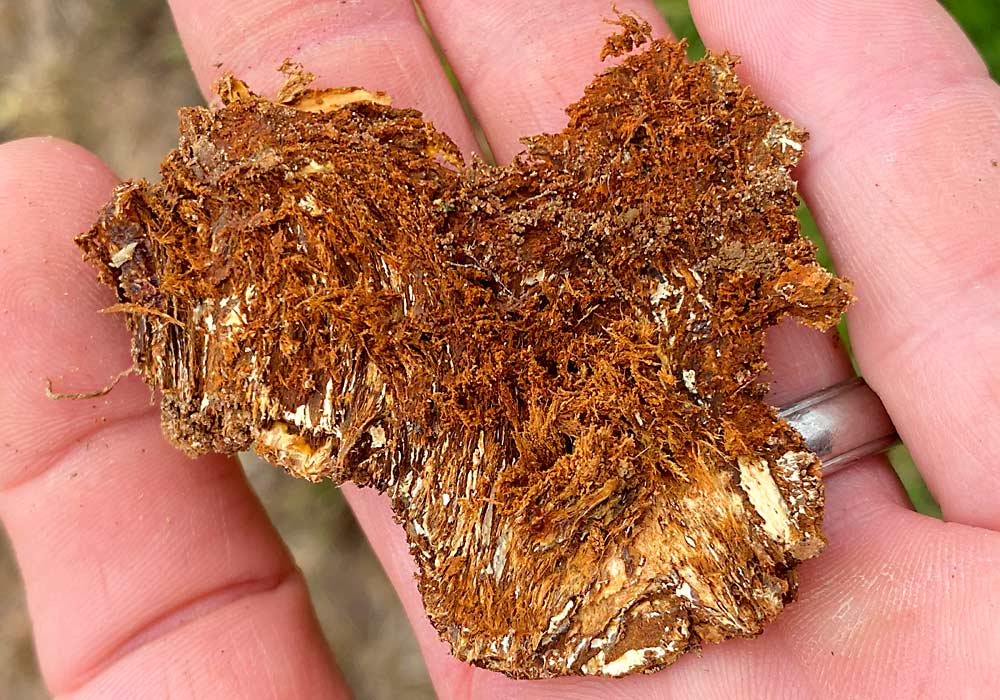
Whether you call it armillaria root rot, oak root rot, mushroom root rot, shoestring root rot or any of the myriad other common names, the disease is insidious in many orchards. Not only has it become the primary cause of premature mortality in peaches in the southeastern United States, as well as a limiting factor in tart cherry production in Michigan, this extremely long-lived, soilborne pathogen has no known chemical control, so it continues cutting into production — and profits — for decades.
Breeders are working on rootstocks resistant to root rot, but until they become widely available, growers will have to take other measures to protect their trees, according to Clemson University plant pathologist Guido Schnabel. His research group is taking a highly unusual approach to fight root rot: growing peach trees rather like mangroves, with the fungus-infested soil removed so the root crowns are exposed.
“It’s not a silver bullet, (but) on replant sites where there’s high incidence of the fungus in the soil, we can delay mortality by about two years,” Schnabel said.
A new study will begin later this year to try the same technique on tart cherries in Michigan.
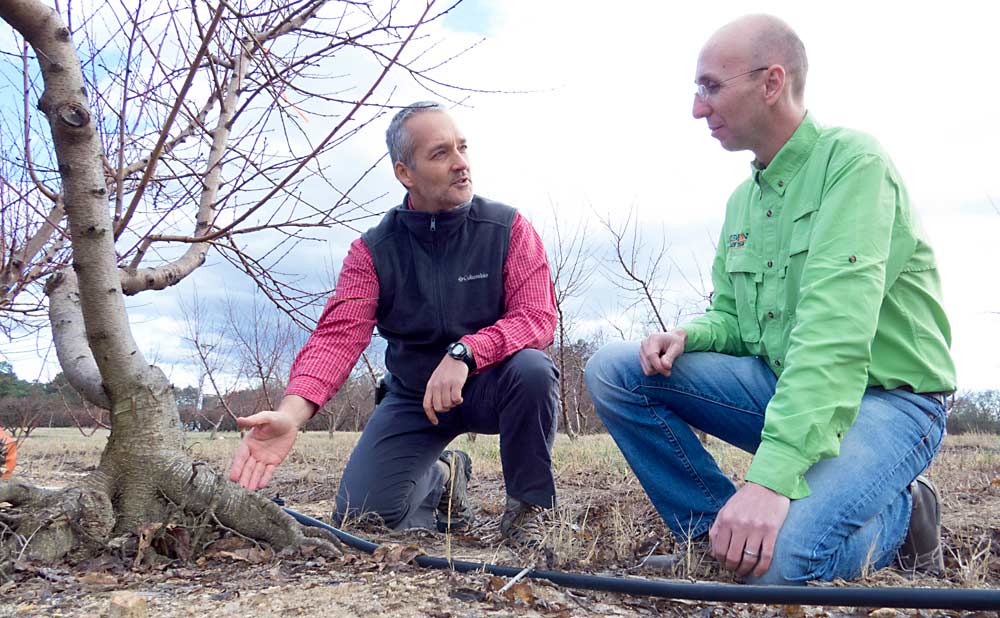
Revealing the roots
Research started over a decade ago, growing peach trees in fabric with the bottom removed so the roots could grow down into the soil.
“We did this on root rot-infested sites in the Edgefield (western South Carolina) and Landrum (upstate South Carolina), and it showed that absolutely there was a reduction of mortality in those trees that were planted higher up, especially when, after a year or so, we removed the pot and the soil, which exposed the roots,” Schnabel said, noting that this work targeted the species Desarmillaria tabescens (formerly Armillaria tabescens), which is the main peach-killing root rot in the region.
Once that worked, Schnabel’s group altered the method to make it more grower-friendly. They formed rows of 12- to 15-inch-tall berms in the orchard, shallowly planted peach trees in the berms and, after two years, used a handheld forced-air blower (such as an AirSpade) combined with a bit of shoveling and raking to remove the bermed soil and expose the roots.
The method demands added labor to form the berms, make waterways to avoid erosion and later excavate the soil.
“And if you choose a rootstock that is prone to a lot of suckering, you will get more suckering on the rootstock, (and growers) will have to remove those suckers either mechanically or chemically,” he said.
Growers have found that the benefits of extending tree life by two years, however, outweighed those costs, Schnabel said.
“Productivity is definitely increased on such replant sites when you do this technique,” he said.
Schnabel and Clemson colleague Bulent Koc, associate professor in agricultural mechanization and business, now aim to mechanize the process. Koc and his graduate student are developing a small paddle wheel that can be attached to an interrow, tractor-pulled, weed-management machine.
“It’s like a tillage tool for horizontal tilling of the soil instead of vertical processing,” Koc said.
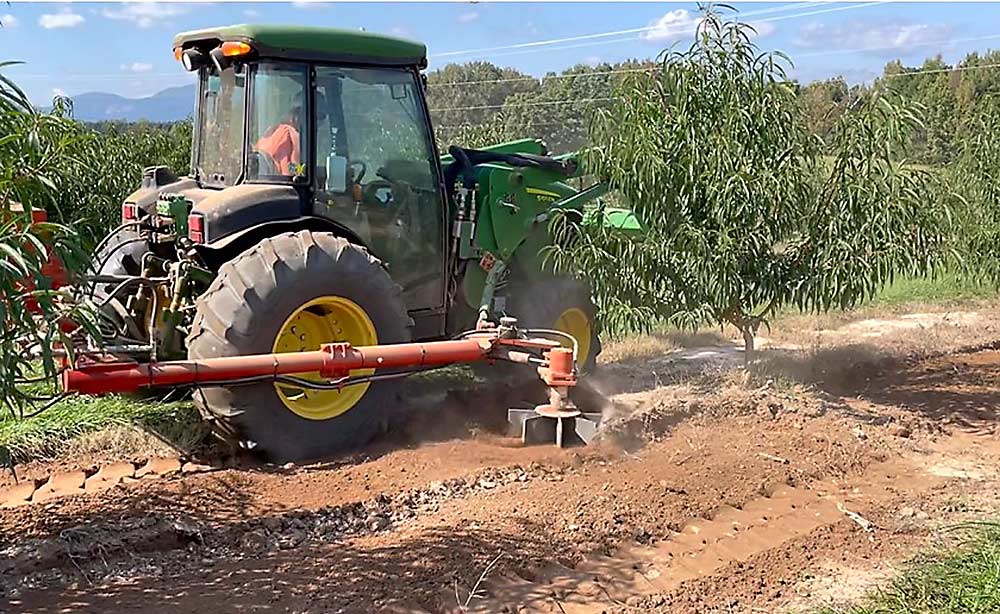
Powered with a hydraulic pump connected to the tractor’s power take-off shaft, the metal paddle wheel rotates at 100 to 150 revolutions per minute, which could potentially damage roots. It is, however, well-suited to knocking down the berm between trees, Koc said.
“We are focusing on the soil between the trees, because for a crew coming in to do pruning, harvesting or other field operations, those berms would be in their way,” he said. “And if the orchard is placed on a sloped ground, then those berms are channeling rainwater and increasing the runoff and erosion.”
Based on testing over the past season in grower orchards, Koc said they are refining the paddle wheel for between-tree berm removal in the coming year. They hope to add a second tool — perhaps a miniature version of a street-sweeping brush — that can then gently clear soil from the roots.
Looking ahead to cherries
With the promise shown in peaches, a group of Michigan researchers will be trying out Schnabel’s root-excavation method on tart cherry trees.
“We’ll be doing it at several grower sites that have armillaria,” said Nikki Rothwell, coordinator of Michigan State University’s Northwest Michigan Horticulture Research Center. Rothwell is one of the researchers involved in the study, along with MSU’s Amy Iezzoni and Ray Hammerschmidt. Sites include a large orchard in Manistee County; one in Leelanau County that continues to experience tree death, despite using Prunus maackii rootstock thought to provide resistance; and one in the Old Mission Peninsula of Grand Traverse County, where an especially virulent strain of Armillaria ostoyae is taking a big toll on tarts.
Rothwell is more enthusiastic about root excavation to fight armillaria root rot in peaches than in cherries, because of the difference that an extra two years means for orchard profitability. Peaches have a lifespan of only 15 to 20 years, so an extra couple of years through root excavation is a large proportional increase, “but in cherries, where we have systems that stay in for 25 or 30 years, I don’t know that it’s going to buy us that much time,” she said. “Still, I’m willing to try it because there’s no other control.”
Schnabel agreed that root rot is a disease that needs a long-term solution. “Really what we have to do is work with breeders to come up with rootstocks that are more tolerant, because this problem is not going away,” he said.
—by Leslie Mertz
Rooting out the rot
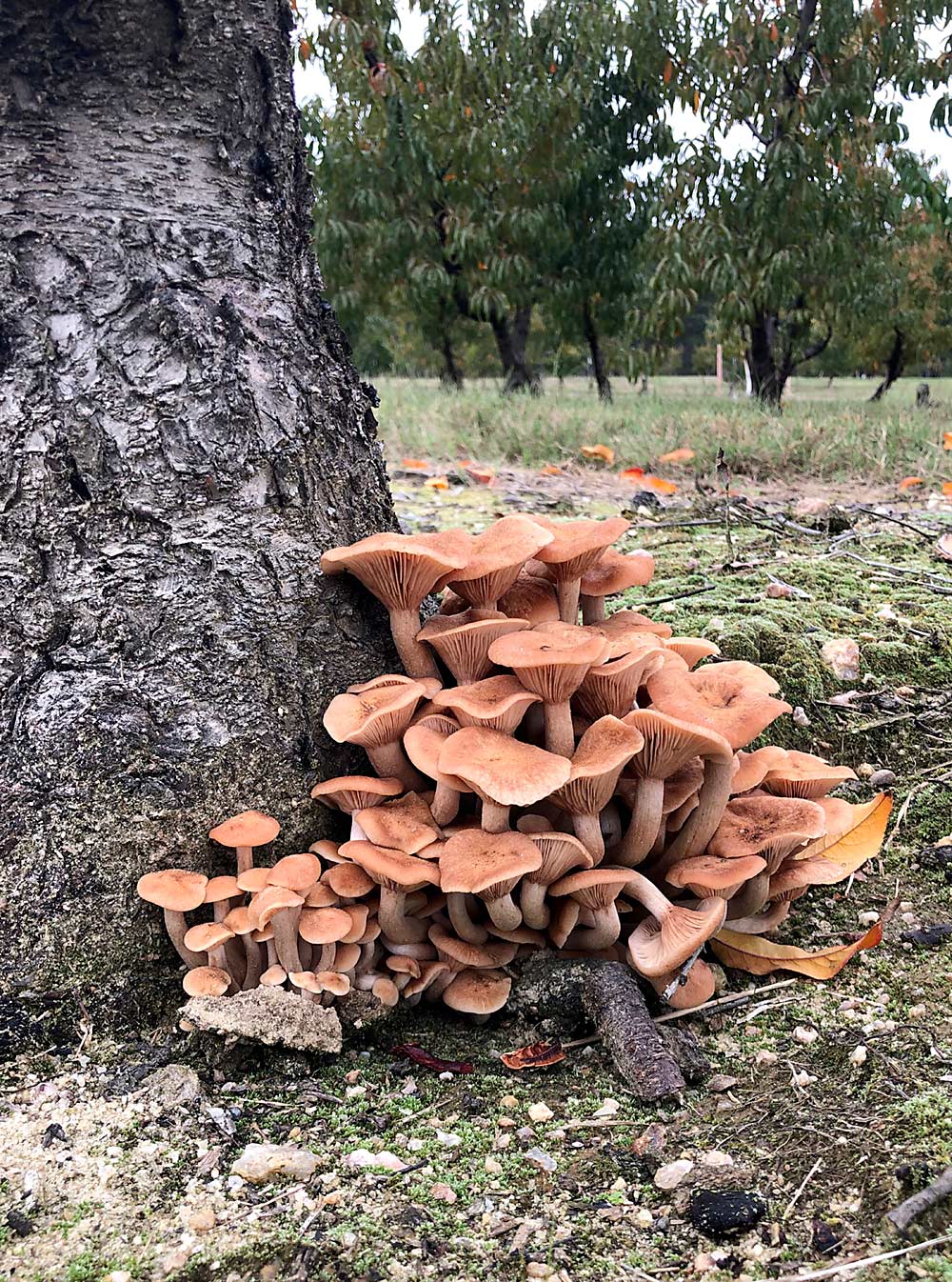
Outside of resistant rootstocks and the root-baring technique for peaches and possibly for cherries, growers have a few other options to combat armillaria root rot, according to Clemson University plant pathologist Guido Schnabel. He offered the following suggestions:
—If replanting in a root rot-infested site, remove as much of the old root from the soil as possible. “A lot of growers crisscross with their rakes over the root area and pull out the primary and, hopefully, also the secondary roots. The more roots they can get out of the soil, the less problems they will have later,” he said.
—Think twice before relying on soil fumigation. “This fungus hides in any remaining roots and is not a free-living organism in the soil. Since fumigants that penetrate the soil don’t necessarily also penetrate a remaining root, fumigation hasn’t worked that well in the past,” he said.
—Consider resistant rootstocks as they become available. For sites with Desarmillaria tabescens, MP-29 is an available option, although he noted that it is currently in rather short supply. Research groups, including his Clemson colleagues, are continuing to develop others, too.
—Watch for signs of infestation, such as the sudden collapse of a cherry or peach tree’s canopy, or the short-lived appearance of root-rot mushrooms after a heavy spring or fall rain. In those cases, check for a white mat of mycelium beneath the bark of an underground root. “That’s a giveaway for armillaria root rot,” Schnabel said.
—If a new infestation is found, remove the diseased tree, as well as its immediate neighbors, and as much root as possible, to help interrupt the progression of the disease, which is mainly through root-to-root contact.
—L. Mertz

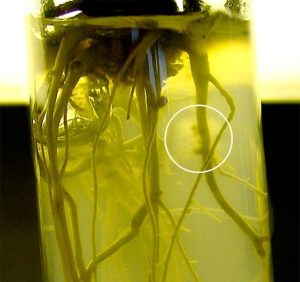
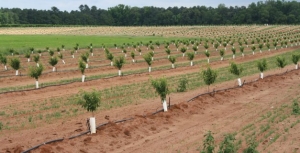





Leave A Comment